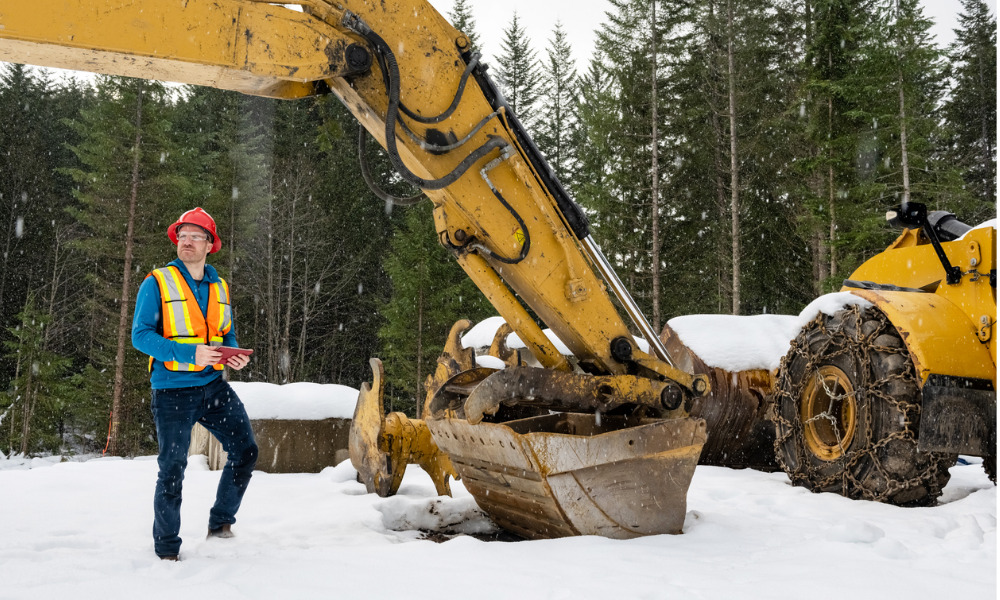Why warm clothing isn't enough to prevent frost bite and hypothermia

Outdoor workers are bracing for a long and cold winter. While those who have been working outside for many years might feel like they know all the tips and tricks to stay warm, there are a few reminders health and safety officers will want to share with their team members. Proper clothing may seem obvious, but how, when and where it is being used isn’t as straightforward as you may think. Physical activity can keep a body warm, but it can also lead to other unexpected problems. And even though the job entails working outdoors, exposure is a hazard that always needs to be monitored.
Proper clothing
The Canadian Centre for Occupational Health and Safety (CCOHS) says protective clothing must be worn for work being done in an environment where the temperature is below 4°C. It says clothing should be selected to suit the conditions. This includes weather such as wind speed, rain, snow, and the amount of sunlight, but also other factors such as the type of job and the duration of the activity.
The CCOHS says it’s better to wear several layers of clothing rather than a single thick garment. “The air between layers of clothing provides better insulation than the clothing itself. Having several layers also gives you the option to open or remove a layer before you get too warm and start sweating or to add a layer when you take a break.”
If the conditions are wet, the outer layer of clothing should be waterproof. If it is windy, then an easily removable windbreaker should be worn. Heated protective clothing should be made available in extreme cold. A neck gaiter is also a great layer to protect the neck and chest area.
It’s important to protect hands and feet as well. The CCOHS says temperature should determine what types of gloves should be worn. “If fine manual dexterity is not required, gloves should be used below 4°C for light work and below -7°C for moderate work. For work below -17°C, mittens should be used.”
Footwear and socks are critical for keeping the body feeling warm because heat escapes through the feet. The CCOHS recommends felt-lined, rubber bottomed, leather-topped boots with removable felt insoles for heavy duty work in the cold. It says it’s best if the leather is waterproofed using a product so it can be used in wet conditions. For socks, it’s suggested to wear either one pair of thick bulky socks, or two pairs of socks, “one inner sock of silk, nylon, or thin wool and a slightly larger, thick outer sock.”
Physical activity
If you’re working outside chances are you’re moving around and doing some form of physical work. The activity can help keep the body warm according to the CCOHS, but it can also do the opposite and cool the body if certain precautions are not taken. One of the main risk factors is sweating, which is why breathable clothing is suggested.
Sweat is the body’s natural cooling system, which means if a worker is sweating, they’re actively reducing the amount of heat in their body. “As humidity increases, more moisture from the air can be absorbed by clothing, which reduces its ability to insulate. The absorbed moisture “wicks” away (evaporates) which can accelerate heat loss through conduction,” says the CCOHS.
If workers are sweating on the job during cold weather, it’s advised they take a break and remove a layer or two of clothing to let that sweat and moisture evaporate.
Monitoring Exposure
Taking regular breaks to warm up is a recommended practice and the length and frequency of the breaks depends on the temperature as well as the windchill. The Saskatchewan Occupational Health and Safety Division created a great “work warm-up schedule” which shows how often workers should take breaks depending on the length of the job and the weather conditions. The longest recommended time even in the least extreme cold conditions is four hours. It says at that time “an extended break in a warm location is expected.”
Part of monitoring for exposure means creating a buddy system or guaranteeing there is a supervisor on site so that everyone working in the cold conditions is under constant observation. All team members should be trained in how to identify cold stress/frostbite as well as the signs and symptoms of hypothermia. While shivering is a commonly recognized sign of cold, the CCOHS says hypothermia can set in even if shivering does not occur.
Extreme cold exposure can be deadly or lead to serious life-altering injuries. Health and safety professionals should have a conversation about the risks and hazards and remedies to ensure all staff have a save and productive outdoor winter work season.





